Meetings
Join us and learn more about refuges and wildlife at our meetings held from 5-6 pm AKT, the 3rd Tuesday of the month. from fall to spring. Every meeting can be attended live if you are in the same town as the speaker, at watch parties in Anchorage, Kenai and Homer or on zoom wherever you are. All meetings are also recorded and posted on this page. You do not need to be a member to attend.
Upcoming Schedule:
November 19: Flying Wild: Aerial Bird Surveys across the National Wildlife Refuges of Alaska and Beyond with Pilot/Biologist Heather Wilson. Live in Anchorage at REI; watch parties at refuge headquarters in Homer and Soldotna.
No meeting in December.
January 21: Looking Back and Looking Forward: Our Years on the Kenai and Alaska Maritime National Wildlife Refuges with retiring long time managers Andy Loranger (Kenai) and Steve Delehanty (Alaska Maritime).
February – April schedule TBD
Every meeting will feature an engaging speaker from one of Alaska’s 16 Refuges or a partner who is closely involved with our Refuges.
- All Posts
- Back
- Walk for the Wild
- Special Events
- Meetings
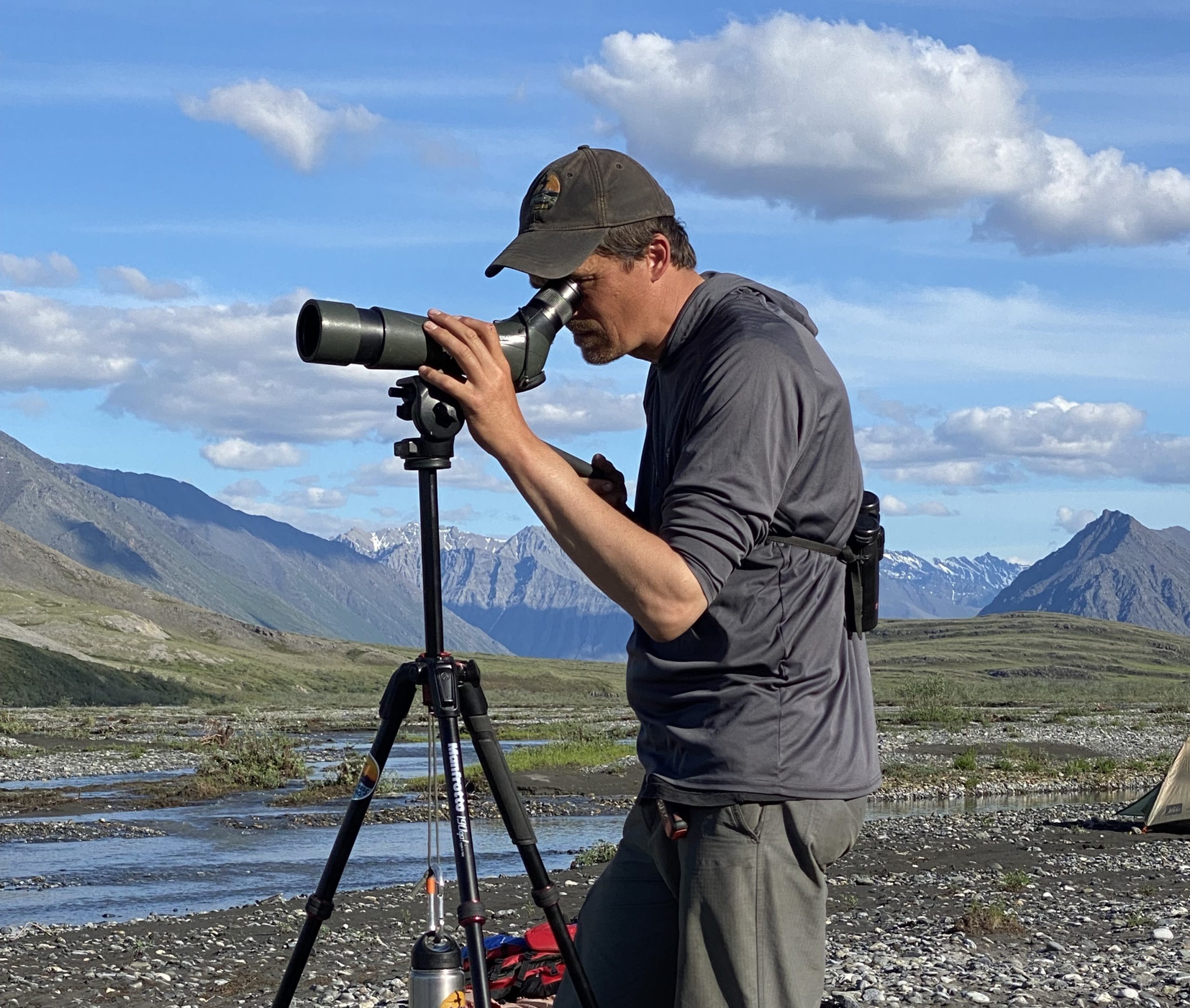
Monday, December 4, 5:30pm, AKT.
Live in Homer at Alaska Maritime Wildlife Refuge's Visitor Center or on Zoom.
You can view the recording of the live event below:
Aaron Lang will share stories and stunning photography at the Kachemak Bay Birders monthly meeting about the unique wilderness birding experiences to be found in the Arctic National Wildlife Refuge. All are welcome to attend or zoom in. Aaron, widely considered one of Alaska’s top birding guides and a downright nice guy, will draw from his 21 years of exploring, birding and guiding in the Arctic Refuge. Aaron is the co-owner of Wilderness Birding Adventures based in Homer and was the guide for the Friends of Alaska National Wildlife Refuges’ trip to the Marsh Fork of the Canning River in the Arctic Refuge last summer.

Aaron collecting feathers from an abandoned nest cavity for Gray-headed Chickadees. No birds were found on the 2023 trip. The feathers were collected for possible DNA analysis. pc: Nancy Deschu
Approximately the size of South Carolina, the 19-million-acre Arctic National Wildlife Refuge has no roads or facilities. The lands and waters are a critical nursery for birds who migrate and winter throughout North America and beyond and is an important home for iconic resident wildlife such as caribou, musk oxen and polar bear. The refuge presents a unique, wilderness birding experience and contains the largest designated Wilderness within the National Wildlife Refuge System. Birds commonly found along the Arctic’s rivers include nesting shorebirds such as Wandering Tattler, Upland Sandpiper, and American Golden-Plover and Golden Eagles, Arctic Warbler and Smith’s Longspurs.
This program will be recorded and posted HERE within a few days.
Aaron began birding in southern Minnesota at age 11 when the curious behavior of a Northern Flicker caught his eye, and he’s been hopelessly addicted to birding ever since. Combining bird-related work with a passion for travel has led him to adventures in Brazil, Tibet, Thailand, Vietnam, Cambodia, and Bhutan. After settling in Alaska, Aaron spent several years running environmental education programs for the Prince William Sound Science Center in Cordova, all while scheming on how to turn his birding obsession into a career. In 2002, he began guiding for Wilderness Birding Adventures and, after 11 years, Aaron and his wife Robin bought the business.

Smith’s longspurs were frequently spotted on the Marsh Fork last summer. PC Jerry Britten
Aaron has served on the Alaska Bird Checklist Committee since 2009, the American Birding Association Checklist Committee (2015-2022), and the board of Audubon Alaska since 2019. He currently holds the Alaska Daydream Big Day Record for the most species of birds thought about in one 24-hour period.
This Kachemak Bay Birder Meeting is cosponsored by the Alaska Maritime National Wildlife Refuge with the zoom and recording capabilities provided by Friends of Alaska National Wildlife Refuges.
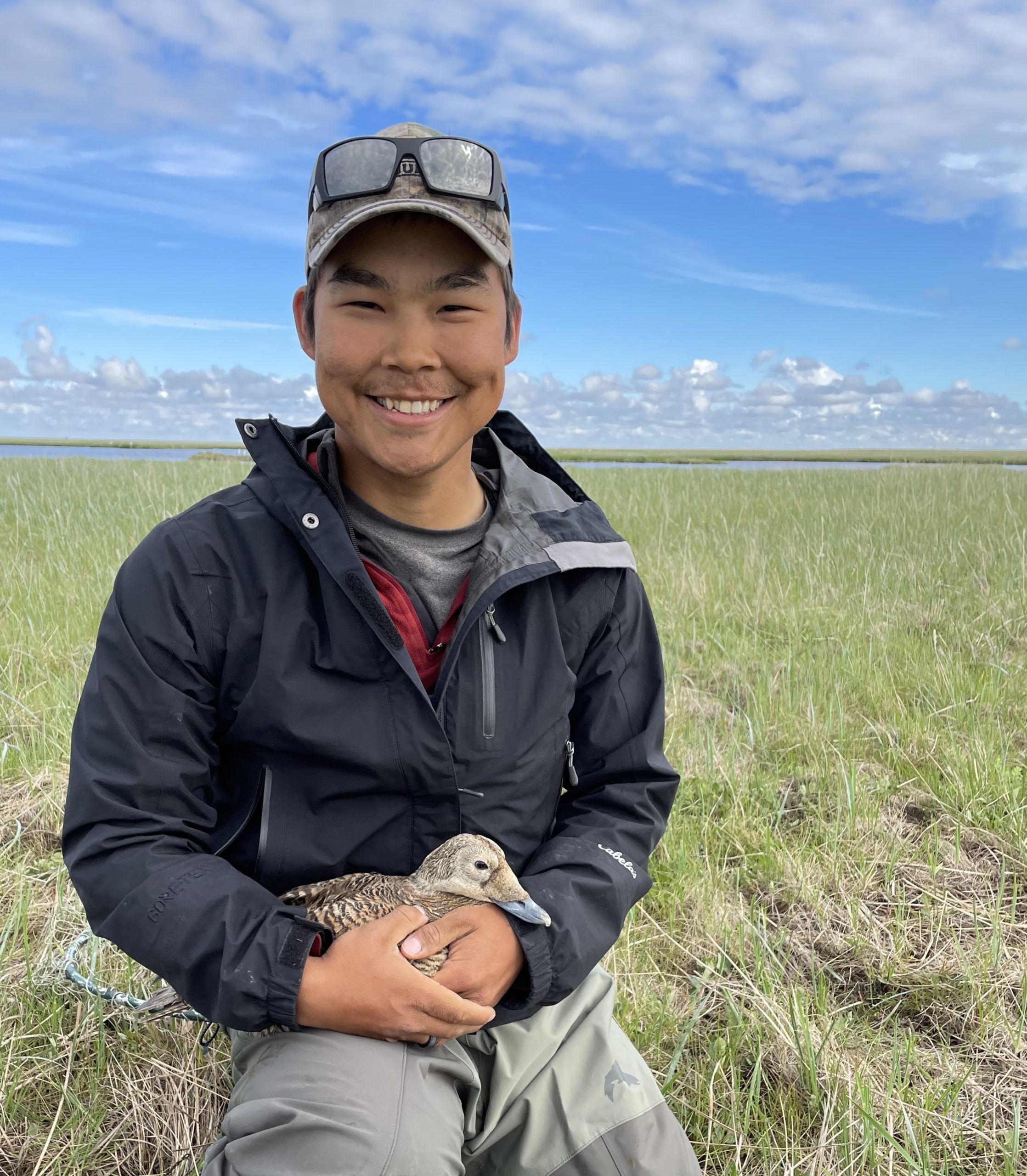
Tuesday, October 17, 5-6 pm AKDT, Randall Friendly, Waterfowl Biologist
This presentation was recorded; watch recording below.
- Bethel – Randall, Yukon Delta National Wildlife Refuge Waterfowl Biologist, will be speaking live at the Refuge Visitor Center (across from the hospital) with potluck to follow. Bring your favorite dish to share.
- Homer – Watch Party with snacks at Alaska Maritime’s Islands & Ocean Visitor Center
- Soldotna – Watch Party at Kenai Refuge Visitor Center on Ski Hill Road
- Kodiak – Watch Party at Kodiak Refuge Visitor Center
The vast, watery Yukon Delta Refuge nestles between Alaska’s largest rivers, the Yukon and the Kuskokwim Rivers, where the tundra meets the Bering Sea. At 19 million acres, Yukon Delta has edged out the Arctic Refuge as the largest wildlife refuge in the country. Its diversity of habitats supports one of the largest aggregations of waterbirds in the world. Presenter Randall Friendly was raised on this land, went off to college and has recently returned as waterfowl biologist for the Yukon Delta Refuge. Let him show you his homeland and hear from him why waterfowl has so inspired him. He will talk about how and why the refuge manages waterfowl from banding programs with Cackling geese and Brant and capture-mark-recapture with Emperor geese.
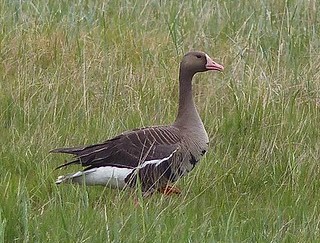 Greater White-fronted Goose, Kigigak Island, Yukon Delta National Wildlife Refuge pc: Kristine Sowl, USFWS
Greater White-fronted Goose, Kigigak Island, Yukon Delta National Wildlife Refuge pc: Kristine Sowl, USFWS
Biography by Randall Friendly: I am from Tuntutuliak a Yupik village of about 800 people. It is located along the Kuskokwim River on the Yukon Delta National Wildlife Refuge in western Alaska about 40 miles downriver from Bethel, the largest town on the Delta. I grew up with a subsistence lifestyle of hunting and fishing with my family. I found out I wanted to work with ducks and geese after my first season working as a technician for the US Fish and Wildlife Service working in remote places on the Yukon Delta. I saw how incredible it was to see the diversity of nesting birds like on Kigigak Island. Since then, I decided one day I wanted to continue working with waterfowl and learn more about them. With mentoring by ANSEP (Alaska Native Science & Engineering Program) I studied for my Bachelor’s at the University of Alaska Anchorage in biology. I completed my Master’s from the University of Alaska Fairbanks this summer in wildlife biology. My thesis was on threatened Spectacled Eiders and how their wintering conditions affect reproduction. While in college, I had a chance to work on Kodiak, and Arctic Refuges as well as Yukon Delta. What I like most about my job is that I get to work with amazing people who are enthusiastic about wildlife and that I get to work outside of the office environment.
I recently moved to Bethel to work full time for the Yukon Delta Refuge as a waterfowl biologist. I have been enjoying some family time after being away for college for quite some time. I like to spend time outdoors whether it is fishing, hunting, or gathering. Having moved to Bethel, I am looking forward to the opportunities to enjoy the outdoors with family and friends.
Read an interview with Randall about how the ANSEP program welcomed a boy from the village and helped him realize his dreams. And hear from Randall in this podcast about his hopes for his work, a chance to inspire others and his masters work on spectacled eiders.
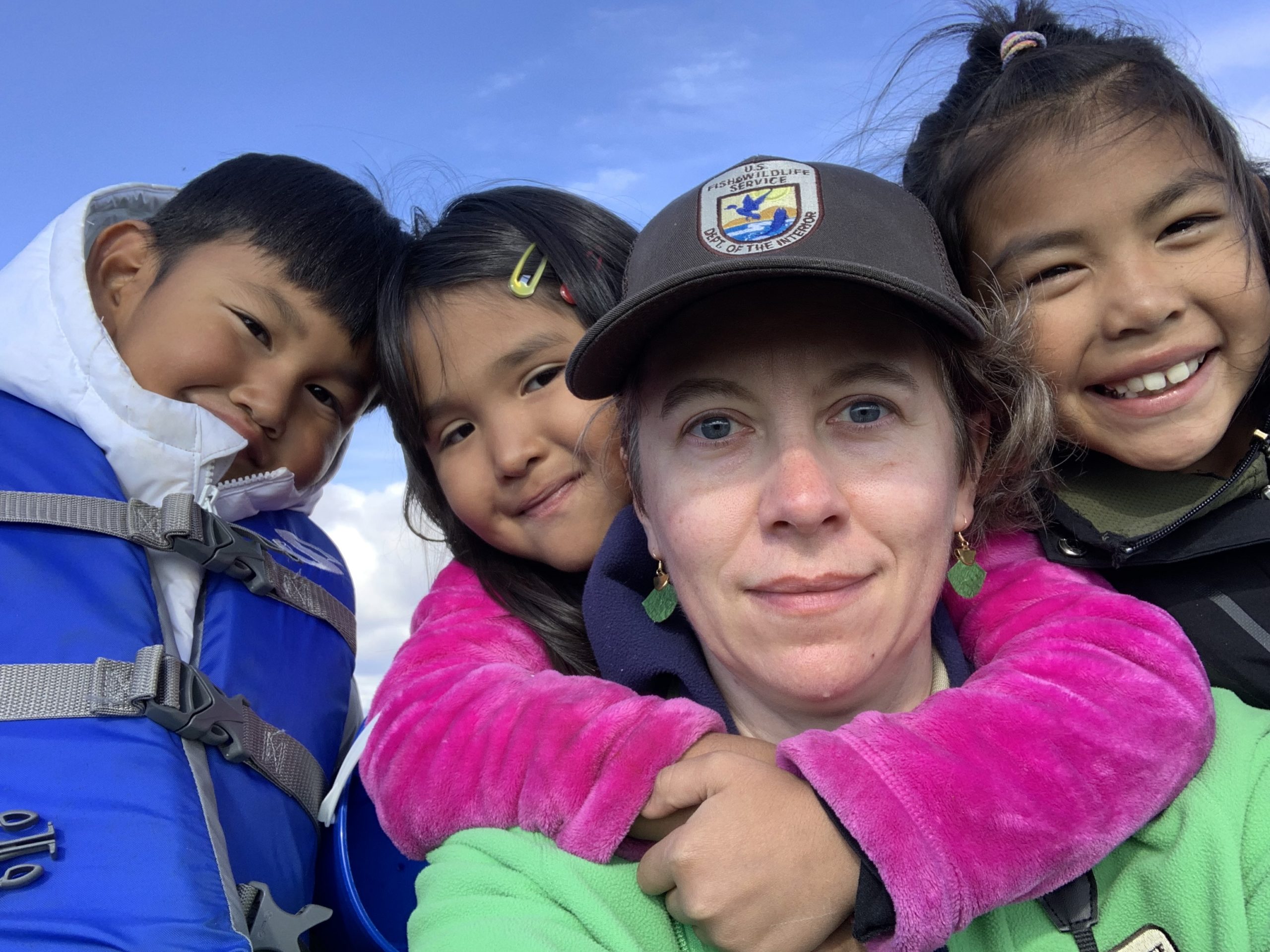
Presented by Brittany Sweeney, Outreach Specialist, Selawik Refuge
What should environmental education be like on Alaska’s National Wildlife Refuges that are simultaneously public lands and homelands for Indigenous peoples? Iñupiaq residents in northwest Alaska have deep knowledge and longstanding connections to these lands that are now part of Selawik Refuge. In their environmental education program, Selawik Refuge centers cultural relevance, uplifting traditional stewardship, and building community partnerships. The annual Selawik Science-Culture Camp is a key example of this approach, but you can also see it in all of the refuge's outreach and management approaches.
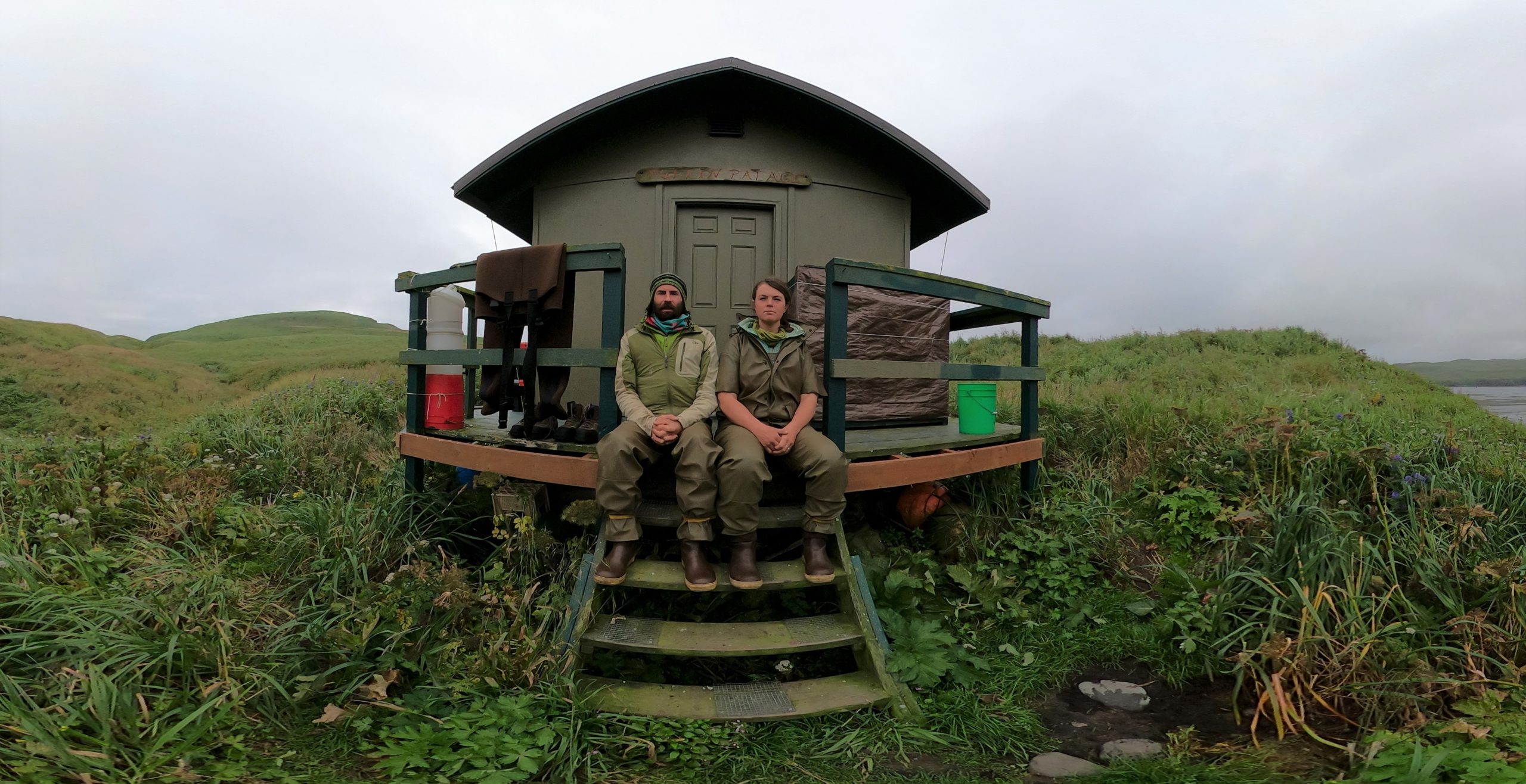
Presentation by: Sarah Youngren & Dan Rapp,
Alaska Maritime National Wildlife Refuge Biological Technicians
Watch Presentation (Youtube)
Post-presentation Q&A:
There are islands in Alaska where hundreds of thousands of seabirds gather annually to breed. These islands are critical to the survival of these species. Imagine yourself living on one of these islands with one other person. Sound picturesque? It is, but you won’t be spending your days sipping umbrellaed drinks while lounging on the beach. You’re here to do a job. You’re here to collect long-term monitoring data on the seabirds (and other species) that breed on your island. You’re going to be cold, wet, and generally uncomfortable for most of your stay. It’s not an easy life, but it’s worth it. You’ll see and hear things very few ever will. You’ll get to collect data that monitors the health of Alaskan seabird populations and the ocean they, and mankind, depend on for survival. Join Sarah and Dan for a summer field season on Aiktak Island, in the Eastern Aleutians, as biological technicians for the Alaska Maritime National Wildlife Refuge. They will show you what it takes to work in this rugged and remote refuge.

Sarah Youngren and Dan Rapp are seabird researchers. Most people have no idea what they do, because they work where very few people go and with species that spend most of their lives at sea (or in these places few people get to go). Between Sarah and Dan, they have 28 years of experience working with seabirds on remote islands in Alaska and Hawaii (and a stint in Louisiana). They both started their professional careers working with Alaskan salmon, and dabbled in other fieldwork, but both eventually found their way to a remote seabird colony. All parts of living and working on these islands spoke to them, and their addiction hasn’t let up. They have worked with a plethora of seabird species, ranging in size from the armful Black-footed albatross, to the fit in your palm Leaches storm-petrel. Most of the data they collect contributes to long-term datasets for the purpose of detecting trends / changes within seabird populations. But they also conduct and participate in original research, most recently they helped outfit albatross with tags to track their movements across the North Pacific from their breeding colony at Midway Atoll National Wildlife Refuge. Both Sarah and Dan earned their Masters degrees in marine science from Hawaii Pacific University in 2015, with theses that addressed patterns and impacts of plastic ingestion in Hawaiian seabirds. After completing their graduate work, they returned to seasonal fieldwork. Since 2015 they have been spending summers working for Alaska Maritime National Wildlife Refuge, specifically on Aiktak Island in the Eastern Aleutians.
 '
'